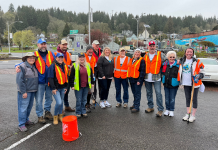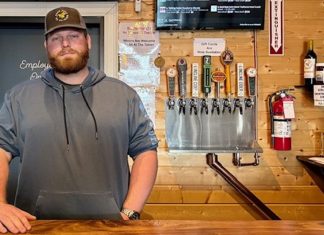- THIS IS NOT A NEW TAX. Local levies have been a thing in our state since the 1800s. Levies expire. They have to be renewed. This renewable Enhanced Programs & Operations (EP&O) Levy is not a new tax, even if there is a slight increase from the current rate.
- 2021: $5.3 million; 2022: $5.4 million; 2023: $5.5 million to be collected.
- Rate will be approximately $2 per $1,000 in assessed value. The rate will fluctuate up and down with property values (values go up, rate goes down, district collects the same amount). Calculation example for a home valued at $250,000/1,000 = 250 * 2.00 = $500/year
- Current EP&O levy rate is $1.34. It is this low because property values went up more than expected, dropping the rate below $1.50.
- State legislation in 2017 caused local levy limits to be reduced to $1.50. Centralia School District and our voters never asked for the reduction. Prior to State intervention, the EP&O Levy rate was $2.82 ($3.01 in 2014, 2015, and 2016).
- Homeowners are paying less for the levy and bond combined than they did last year. As an example: One home last year was assessed at $201,900. The homeowners paid $747.03 for levy and bond together. This year, the house is assessed at $234,600. They will pay $642.80 for both combined. This is because both the bond and the levy rate have dropped. The bond will drop further next year.
- The Bond dropped from $2.20 per $1,000 to $1.40 this year. It will drop further next year, offsetting some of the levy increase.
- In 2018, the owner of a $250,000 home paid $750 for the levy. This year, the owner of a $250,000 home will pay $335.
- Levies are for learning. Bonds are for building. The bond is a one-time financing that paid for the construction at FP, JL, and CHS. These funds cannot be used for anything else, and they have been fully spent. Levies support educational enhancement programs and facility maintenance.
- Levy funds cannot be used for basic education salaries. However, some of the professional development, experience, and leadership stipends are covered by levy funds.
The levy helps fund (in no particular order):
- athletics
- music & arts programs
- special education (state does not fully fund)
- no-cost breakfast & lunch for all students
- transportation
- technology (75% of our 3,000 Chromebooks need to be replaced within two years)
- professional development (to make great teachers even better)
- curriculum adoptions
- behavioral support staff
- school counselors (the state funds 2.5 elementary counselors for 5 schools)
- school security staff
- extracurricular activities and much more.
These programs & services would suffer cuts in the event of a catastrophic loss.
- A double failure is catastrophic. It means a reduction of nearly $12 million next year – almost 19% of our operating budget this year. We were already facing a $3 million in cuts, if the levy passed at $2.50. A double failure means the complete loss of all levy funding, and the loss of State Equalization funding beyond that. These cuts would impact every student, every program, every staff member, every school, and every family.
- The last time Centralia had a double levy failure, four schools were closed (Oakview, JL, Logan, and Bucoda). Bucoda later voted to leave the Centralia School District because of the failure. CMS and CHS split shifts at the high school (CHS 7am-12pm, CMS 1pm-5pm). Middle and high school students lost the equivalent to 1.5 months of instructional time. Sports were pay-to-play, staff were laid off, and programs were dramatically cut.
- The increases in basic education allocation cannot be used to support levy funded programs and services. We have had to keep these programs running with less funding, depleting our fund balance (reserves) to the policy minimum.
- The McCleary decision was about funding Basic Education. It had nothing to do with the rest of our programs and services.
- On average, this year, Centralia’s teachers are paid 0.2% less than Chehalis’ and 3% less than Tumwater’s. They are paid 2% less than the state average, even though their average experience is higher than the state (we receive no additional experience funding from the state, but Chehalis does).











































